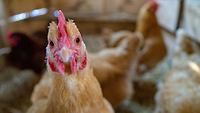NARMS Releases 2020 Report on AMR Trends in Foodborne Pathogens

Image credit: Karolina Grabowska via Pexels
The National Antimicrobial Resistance Monitoring System (NARMS) recently published its 2020 Integrated Summary, which includes data providing phenotypic and genomic antimicrobial resistance (AMR) trends for Salmonella, Campylobacter, generic Escherichia coli, and Enterococcus isolated from retail meat and food-producing animals.
NARMS is a collaboration between state and local public health departments and federal agencies, including the U.S. Food and Drug Administration (FDA); the U.S. Centers for Disease Control and Prevention (CDC); and the U.S. Department of Agriculture’s (USDA’s) Food Safety and Inspection Service (FSIS), Animal and Plant Health Inspection Service (APHIS), and Agricultural Research Service (ARS).
According to NARMS data for 2020, 81 percent of Salmonella isolates were not resistant to any of the antimicrobials tested. Although overall AMR among all Salmonella isolates declined in most sources tested by NARMS, a multidrug resistant (MDR) strain of Salmonella Infantis that emerged in 2014 and is resistant to critically important antibiotics, including ciprofloxacin, continued to account for a large part of overall Salmonella resistance in poultry sources at slaughter and retail. Additionally, among retail chicken and turkey product samples collected at slaughter, there were more Salmonella isolates with decreased susceptibility to ciprofloxacin—31 percent in chicken and 5 percent in turkey in 2019 compared to 41 percent in chicken and 14 percent in turkey in 2020.
Regarding Campylobacter, fluoroquinolone resistance was mostly unchanged in isolates from retail meat and food animal samples between 2019 and 2020. In isolates from market swine cecal content, fluoroquinolone resistance increased from 22 percent in 2019 to 31 percent in 2020.
Furthermore, an increase in Enterococcus isolates with no resistance to antibiotics tested under NARMS was found across most food animal and retail meat sources relative to levels between 2017 and 2019.
In 2020, colistin was added to the antimicrobial susceptibility panel for Salmonella and E. coli, resistance to which was below 3 percent for Salmonella isolates among most retail, food animal, and human samples, except for cattle product collected at slaughter and retail ground beef (7 percent each). Colistin resistance was found in only one E. coli isolate, which was isolated from beef cattle cecal contents. None of the Salmonella or E. coli isolates from animals, animal products, or retail meats harbored any mobile colistin resistance genes (mcr genes).
Finally, in 2020, only two avilamycin-resistanct Enterococcus isolates were recovered from chicken and market swine cecal contents.
NARMS findings help public health partners continually assess the nature and magnitude of bacterial antibiotic resistance at different points along the farm-to-fork continuum. Traditionally, NARMS has tracked changes in antimicrobial susceptibility of select foodborne enteric bacteria found in ill people (CDC), retail meats (FDA), and food animals (USDA). The national surveillance program helps public health partners identify new types and patterns of resistance and any changes over time. NARMS also aids in understanding the impact of interventions designed to limit the spread of resistance.
FSIS and CDC also use NARMS information on a case-by-case basis to investigate foodborne illnesses and outbreaks. FDA routinely uses NARMS data in its regulatory review and approval of new animal antimicrobial drugs, and to develop and update policies on the judicious use of antimicrobials in animals.
Looking for a reprint of this article?
From high-res PDFs to custom plaques, order your copy today!





